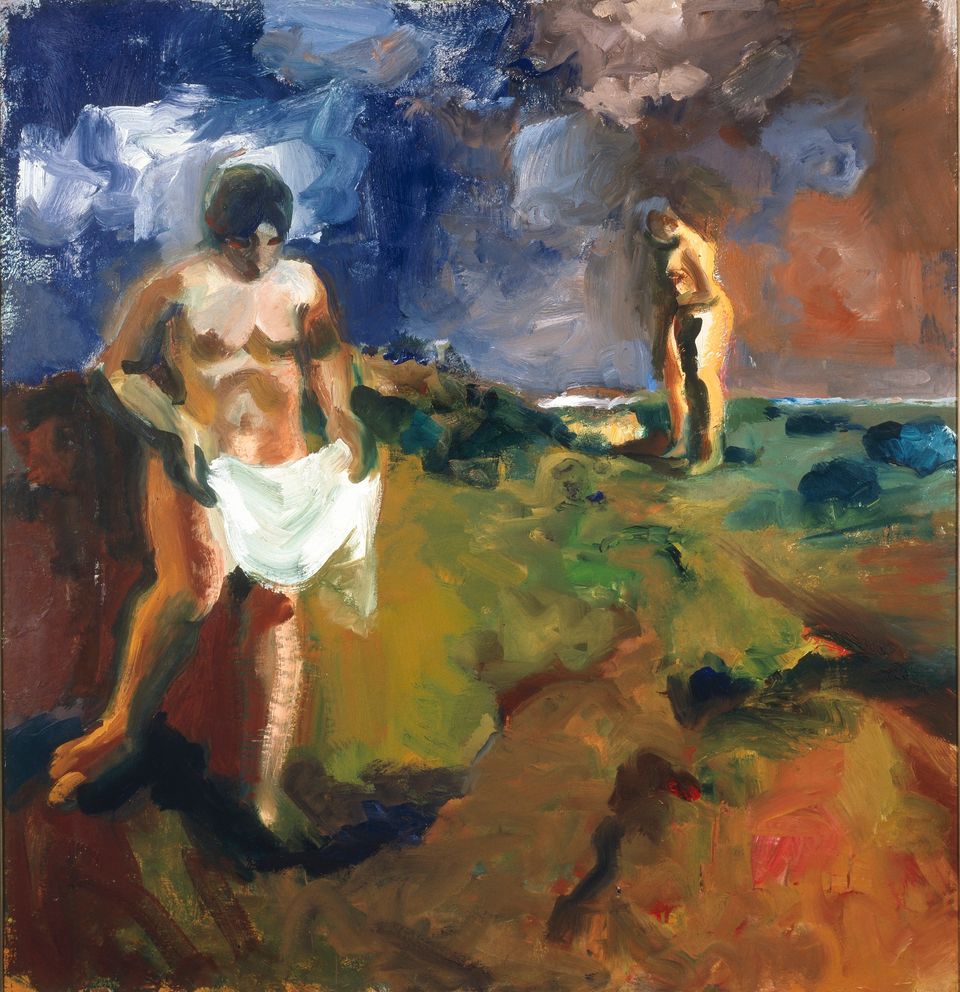

This is the twelfth in a series of personal observations about how people experience and explore museums. Take a look at Howard's other blog posts about seeing things.
Here, I am thinking about the northern California painters again and have in my notebook from a few months back, some ideas about Elmer Bischoff's Two Bathers. Though it is no longer on view (mea culpa) the image here should give you an idea of the strength of his work and his belief in figurative work, similar to his contemporaries Paul Wonner, David Park, and Richard Diebenkorn. In the years following World War II, they applied their very painterly techniques to figural work, while the abstract expressionists on the East Coast had all but cut out recognizable human representation in their works.
Two Bathers first struck me as a kind of dark vision with its deep hues, forceful brushstroke, and the two figures inhabiting the same landscape but belonging to seemingly different worlds. But on closer and repeated viewings, I began to see the work in terms of its beauty: as if Cezanne's bathers had traveled from Aix to the distinctive northern California landscape. The world is verdant and the sky is blue with a threat of red. Perhaps it's the relationship between the two bathers that holds the work together: a taut psychological landscape of isolation as well as of not being alone.
I was glad to discover Bischoff's work and learn more about him. Born in Berkeley, California, in 1916, Bischoff served in WWII, and after the war taught at the California School of Fine Arts in San Francisco. There, he met Park and Diebenhkorn and became a member of the influential Bay Area Figurative Movement. The movement gained formal recognition in 1957 when the Oakland Museum of Art presented the groundbreaking exhibition, Contemporary Bay Area Figurative Painting.

















